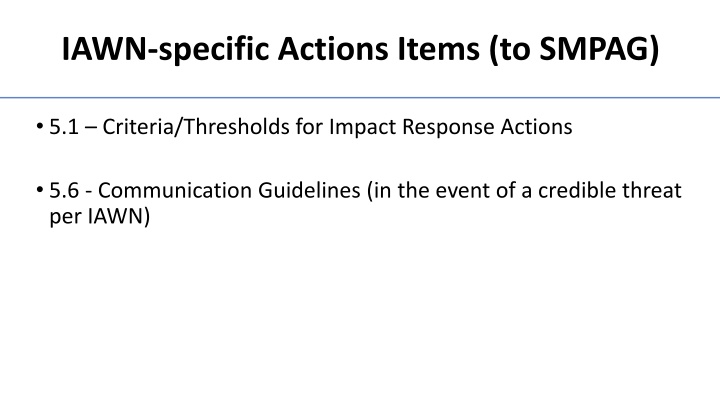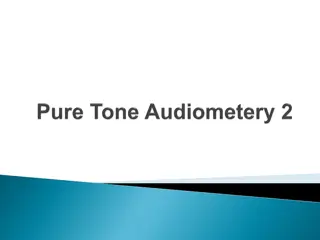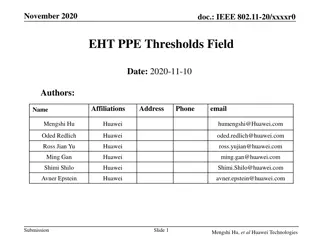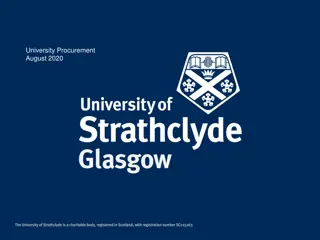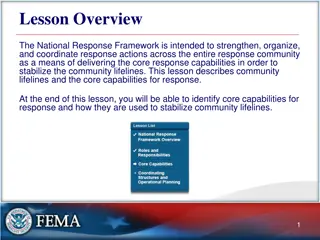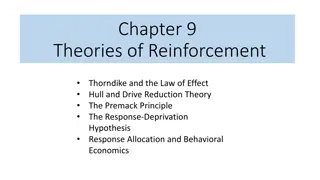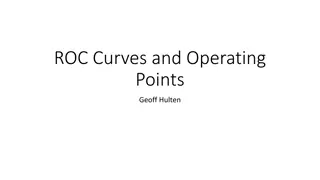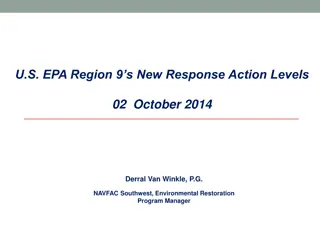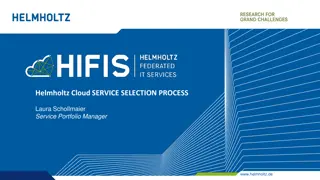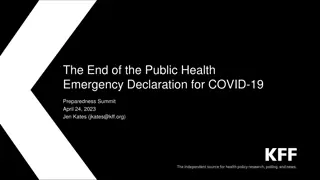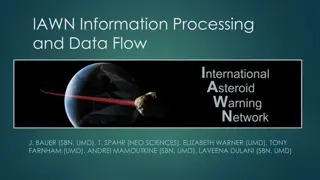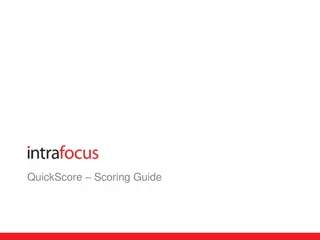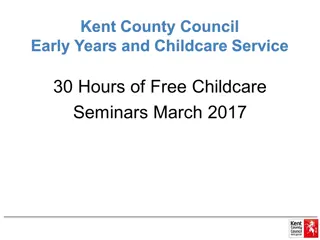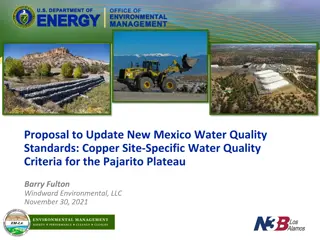Criteria and Thresholds for Impact Response Actions by IAWN/SMPAG
Discussion of criteria and thresholds for impact response actions by IAWN/SMPAG, including warning thresholds based on size and probability of impact, recommendations for terrestrial preparedness planning, and initiation of mitigation mission options. The rationale behind these criteria aims to strike a balance between alerting the public without causing undue alarm, ensuring effective communication between IAWN, the public, and the United Nations.
Download Presentation

Please find below an Image/Link to download the presentation.
The content on the website is provided AS IS for your information and personal use only. It may not be sold, licensed, or shared on other websites without obtaining consent from the author.If you encounter any issues during the download, it is possible that the publisher has removed the file from their server.
You are allowed to download the files provided on this website for personal or commercial use, subject to the condition that they are used lawfully. All files are the property of their respective owners.
The content on the website is provided AS IS for your information and personal use only. It may not be sold, licensed, or shared on other websites without obtaining consent from the author.
E N D
Presentation Transcript
IAWN-specific Actions Items (to SMPAG) 5.1 Criteria/Thresholds for Impact Response Actions 5.6 - Communication Guidelines (in the event of a credible threat per IAWN)
(1/3) Criteria/Thresholds for Impact Response Actions IAWN/SMPAG: 5.1 Discussion and concurrence at previous SMPAG Meeting in February 2017 IAWN shall warn of predicted impacts exceeding a probability of 1% for all objects characterized to be greater than 10 meters in size, or roughly equivalent to absolute magnitude of 28 if only brightness data can be collected. Rationale: Impact probabilities greater than 1 per cent are rare yet warrant awareness of possible effects. Most objects greater than 10 meters in size could have some effects (air blast and pieces) that could reach the Earth s surface. IAWN is compelled to warn populations if bodies will have effects that reach the ground. Setting threshold at 1 per cent is a compromise between not being overly alarmist and not warning too late for necessary action to be initiated. It is a probability figure that individuals and governments can comprehend. An alert such as this demonstrates that the IAWN is functioning. Further, it ensures the flow of communications from IAWN to the public and the United Nations.
(2/3) Criteria/Thresholds for Impact Response Actions IAWN/SMPAG: 5.1 Terrestrial preparedness planning should begin when warned of a possible impact: Predicted to be within 20 years, Probability of impact is assessed to be greater than 10%, and Object is characterized to be greater than 20 meters in size, or roughly equivalent to absolute magnitude of 27 if only brightness data can be collected Rationale: Effective terrestrial preparedness involves determination of the risk corridor for impact of an object. This is made possible with the increased 10% impact probabilities within 20 years, which is not too long to begin planning, especially in cases for larger objects. This provides population centres on the Earth information to begin plans for emergency preparedness if needed. The surprising effects of the Chelyabinsk event in 2013 from an object ~18 meters in size led to the establishment of a relatively low limit (20 meters) in this threshold criteria.
(3/3) Criteria/Thresholds for Impact Response Actions IAWN/SMPAG: 5.1 SMPAG should start mitigation mission option(s) planning when warned of a possible impact: Predicted to be within 50 years, Probability is assessed to be greater than 1%, and Object is characterized to be greater than 50 meters in size, or roughly equivalent to absolute magnitude of 26 (assuming)if only brightness data can be collected. Rationale: Several decades warning, if available, provides sufficient lead time to mount in-space characterization missions to enable more effective mitigation techniques. If more than 1 per cent probability of impact by a 50-meter sized object is assessed, IAWN will inform SMPAG immediately following verification of the orbit. Part of a characterization mission plan would likely be to deploy a radio transponder with the object to enable more precise tracking of the orbit.
Communication Guidelines (in the event of a credible threat per IAWN) IAWN/SMPAG: 5.6 If an object (10-meters or greater in size has a 1% or greater probability of impact), IAWN shall warn of the pending impact on the IAWN webpage (http://www.iawn.net ) and JPL sentry page (http://neo.jpl.nasa.gov/risks ). One page description suffices. if such an object is on impact trajectory, NASA s Center For NEO Studies (CNEOS) and ESA s Near-Earth Object Dynamic Site (NEODyS) shall independently prepare appropriately relevant maps of the Earth impact sites with time of impact Content of the page Designation Facts (discovery, size estimate, composition) Impact location (example next pages) IAWN spokesperson informs UNOOSA UNOOSA informs appropriate entities and member states of the credible threat
Example Notification Sheet A small asteroid, provisionally designated 2017 XYZ) was discovered on 31 Nov 2017 by Pan-STARRS located atop Halekakala (Maui), Hawaii and reported to the Minor Planet Center. Additional follow-up observations by the Catalina Sky Survey, the University of Hawaii 2.2-meter, and the Large Altazimuth Telescope (BTA-6) 6-meter telescopes have confirmed the orbit of 2017 XYZ. Basic facts RE: discovery, follow-up, etc. 2017 XYZ is observed to be approximately 120 meters in size. Based on current calculations, the asteroid has a 4% probability of impact will be on 31 Sep 2028 in the Eastern Pacific Ocean near the northern coast of Mexico at 13:13 UTC. Current predicted details Future observations are planned with the planetary radar systems located in Goldstone and Arecibo on 1 April 2018. Further radar observations will precisely determine the orbit of 2017 XYZ. Next Observations IAWN & SMPAG (trusted sources of information, etc.) The International Asteroid Warning Network (IAWN) has informed the Space Mission Planning Advisory Group (SMPAG), currently chaired by the European Space Agency.
Notification Particulars (to be agreed upon by IAWN members) Asteroid name/designation Asteroid characteristics size (metric and standard), composition (if known), brightness/albedo, etc. Observational history (discovery information, follow-up) Prediction of asteroid trajectory including closest distance to Earth (surface, not center) and date and time of close approach. A colloquial (non-statistical) qualifier of impact risk Hazard to space assets (if any) Future observations Visibility, visual magnitude (i.e., amateur astronomers be able to see the object) Consistent terms of measurement: size rather than diameter of object, brightness/albedo of object, etc. Authoritative source(s) for more information (i.e., IAWN, SMPAG)
Overview for NEO Threat Response (very simplified) United Nations COPUOS/OOSA UN Office of Outer Space Affairs Committee on Peaceful Uses of Outer Space Inform in case of credible threat Parent Government Delegates Potential deflection mission plans Determine Impact time, location and severity Space Missions Planning Advisory Group (SMPAG) International Asteroid Warning Network (IAWN) Observers, analysts, modelers Space Agencies and Offices 8
IAWN & SMPAG Actions (again, Notional) Object detected, impact potential confirmed SMPAG members convene to formulate recommendations SMPAG member agencies vet, and agree to, recommendations IAWN, supported by NASA, ESA and others validates existence of impact threat No SMPAG recommendations briefed to member states Member states agree to support SMPAG recommendations IAWN formally communicates the threat to UNOOSA who in turn inform member states Yes Member states inform UN of recommended actions to be taken IAWN, serves as a central international information point of contact Action Taken
